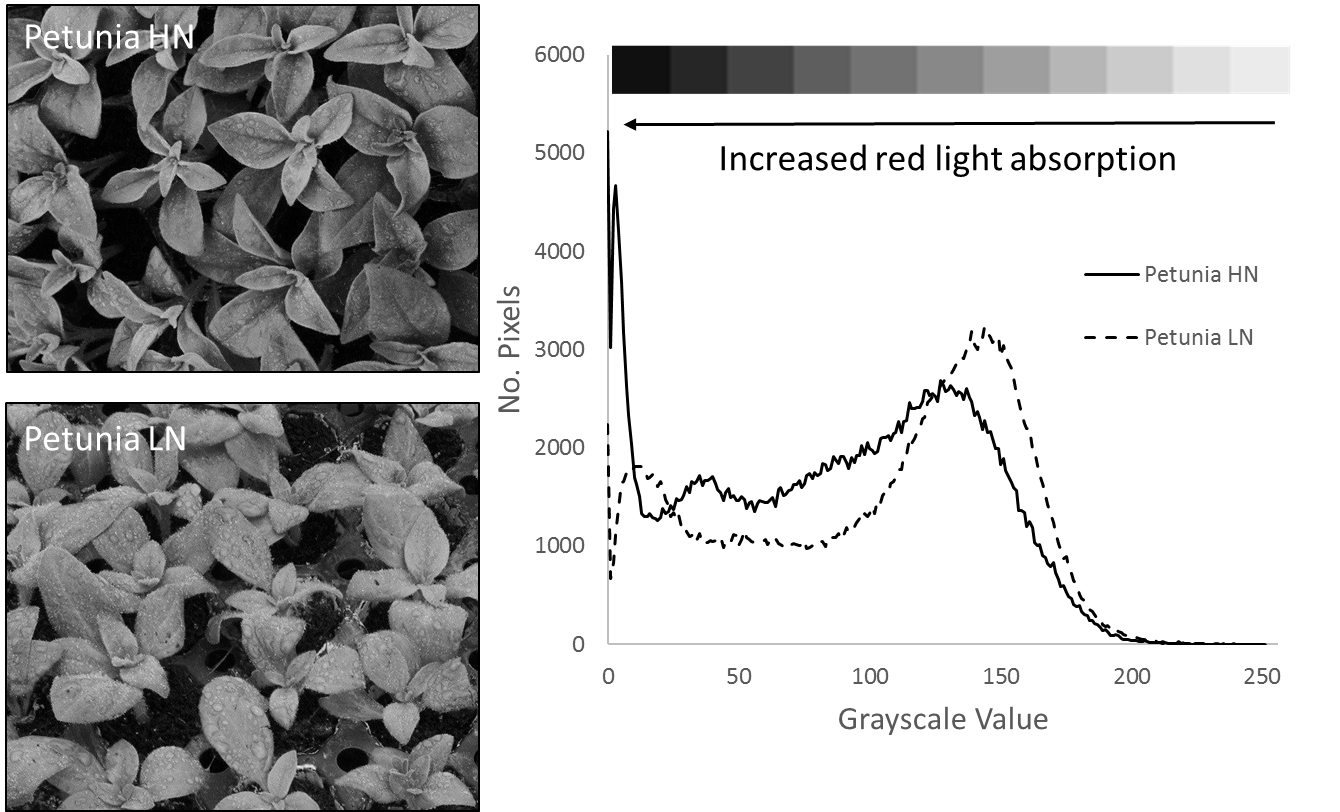Nitrogen (N) deficiency results in stunted plants that are chlorotic in appearance. Maintaining plant N status at an optimal level is important as plant growth is related to the tissue N content in many species. Currently, laboratory analysis is the only method available to accurately measure tissue N in plants. This method is expensive ($15-20 per sample) and time consuming (takes several days for analysis). Because of this, growers use electrical conductivity (EC) of the substrate to indirectly manage tissue N in plants. However, EC is a measure of total fertilizer salts and does not specifically indicate N level in the substrate. Moreover, substrate EC is influenced by nutrients that are absorbed slowly by the plants and accumulate in the substrate, and not necessarily by N.
Controlled Environment Agriculture lab at Purdue University is developing Smartphone-based Apps that growers can download freely and easily estimate N status of plants as needed. Smartphone-based estimation of plant N has several benefits including enabling timely decisions, regular plant N monitoring, reducing production-related costs, and minimizing fertilizer runoff from greenhouses.
The approach assumes that tissue N in plants is related to the chlorophyll content or the amount of light absorbed by plants, as chlorophyll absorbs light. If plants reflect more light instead of using it in photosynthesis, this may indicate less chlorophyll or N in plants. In other words, N content in plants can be indirectly estimated by measuring the relative extent of light reflected from the plant. Images captured by a camera uses light that is reflected from plants. Therefore, plant images have information on the amount of light that is reflected from them. Key is develop software that can extract this information from images. Smartphones can be used to take images of plants. We are developing free software that can process Smartphone images and output N content of plants in the image. Of course, this requires research work on developing algorithms, image processing and the right wavelength of light that is most useful for N analysis. The work is in progress at Purdue but we anticipate to develop a beta version for testing in the Fall of 2018. Our plan is to make free software for growers that can be downloaded on Smartphones or computers to estimate N status of plants in greenhouses, as needed.

Preliminary data from Petunia seedlings showing the potential use of image analysis to differentiate plant signatures under low (LN) and high (HN) nitrogen treatments is shown in the above figure. Note that there are more dark pixels (grayscale < 100) in HN (solid line) than LN (dashed line) treatment in the picture, indicating less reflectance in HN treatment (darker the image, the less light reflected from plants). This is likely due to more chlorophyll and N in the HN treatment.
If you like this research, please don’t forget to send an email to me supporting the research.